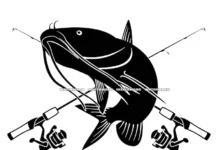Paddle Fishing Safety-It’s No Accident
By Neil Taylor

In the last few years, we have seen the kayak fishing boom explode before our eyes. Many who heretofore had no access to open waters, can now, quite inexpensively, navigate out to where the fish are and of greater importance, do so with a measure of stealth not available to power boats. Now though these paddle craft do not burn any fuel and rely on human propulsion, doesn’t mean that there are no hazards or safety considerations. These concepts are quite instructive and relevant to all who uses these craft – especially those who are relatively new to paddle fishing.
First of, paddlers should have the following proper equipment and supplies:
Required safety equipment:
- Visual Signaling devices (Light, mirror, waterproof reflector decals)
- Audio signaling devices (whistle, horn).
- Personal Flotation Device.
- Communication Device- Highly recommended: Submersible VHF radio and/or a dry bag for your cell phone. (Calling a Mayday/Coast Guard-they monitor channel 16)
The right watercraft
Various kayaks models have different stabilities. An angler who is going to be in the shallow oyster laden waters should choose a boat that isn’t too “tippy” – so as to avoid flipping them face down onto an oyster bed.

Compass and handheld GPS
A great couple of tools that can be very helpful in the event of an emergency or for finding your way back to your launch.
Spare batteries
Should the GPS and Flashlight can run low on you – so having a spare pack of batteries for each should be standard practice. For the VHF radio, set a schedule for getting it on the charger at intervals to make sure it has the power needed to operate.
First aid
I carry some general supplies that include — but aren’t limited to: Bandaging, peroxide, Neosporin and tape. You might consider this: Take a first aid class and learn to give a shot and how to stitch up a wide wound.
Protection from the sun and elements
Sunscreen, sunglasses, and wide brimmed hat- are Important items to reduce exposure.
Spare clothing: Keep in a large nylon travel bag. In it you will find spare shorts, t-shirt (long sleeve & short), windbreakers (Jacket & pants) 2 sets and a couple of extra hats.
Water!
This is critical. Don’t dehydrate yourself!
A spare paddle
If you are somehow separated from or your primary paddling device becomes unusable (or “missing”) a spare kept in the hull is a fantastic “backup”.
An anchor
A good anchor to hold you in place is important. It can keep you from drifting into trouble areas and if rescue is required will keep you located in one precise location.
For night time trips
A 360 degree light is needed if you’re going to be getting out of your kayak. It’s not a bad item to have on your boat anyway, but required if you exit your kayak. In addition to that item, dependable flashlights and/or headlamps are equipment that should be well maintained and taken along on any trips where you could see low light conditions.
Proper dry storage
Cell phones that are your only electronic method for calling for assistance should be kept in Zip Lok freezer bags work well, with a couple of paper towels added.
The Buddy System
Don’t fish treacherous areas alone. Unnecessary risks are dumb even when you have someone with you, but if you want to do a special trip with some unusual challenges, don’t do it alone — and I strongly suggest putting your life jacket on in any of these situations.
Maintain visual contact with your fishing buddy.
Once they turn the corner on you, sometimes you will have a terrible time finding them again.
Leave a float plan with someone and some kind of plan of action if you are overdue (see VHF radio and cell phone in dry bag: Let them know what channel you will monitor on the VHF). Perform a “radio check” with your fishing buddy at the start of the day.
“Extreme” fishing trips such as targeting beach tarpon and sharks in the kayak: Use the buddy system here and please wear your PFD if you choose to try this kind of dangerous fishing expedition.
Trip Planning
Ask questions about areas where you haven’t gone before. Others have info that will bring up items of caution and concern for a first timer to that area. Take a look at aerial maps and perhaps even print these out to take along with you for referencing during the trip.
Have an “action plan” in place for various unexpected emergencies. Quick and ready access to your PFD (if you’re not wearing it) should be instantaneous — should you end up in the water.

Be alert and aware
- Storms- Check weather forecasts before you go. The phrase “keep an eye to the sky” comes to mind. Watch for developing weather. Don’t get caught in rough storms and high seas because you were ignorant of pop up storms.
- Other water craft- Keep an eye out for other craft bearing down on you (Action plan: Have that signaling device handy for this situation). A craft like a sailboat doesn’t put off a lot of noise so you must take a look around you, particularly if you frequent areas where a lot of sailboat operators use the waters.
- Take a look down before you enter the water. Dismount onto a jagged oyster bar, stingray, bull shark or jellyfish may add unwanted excitement to your life.
Have fun, but please be safety conscious as well!
Neil Taylor operates his kayak charters out of St. Petersburg, and can be reached by phone at 727-692-6345.
- The Neil Blog… - July 26, 2023
- The Catfish - July 26, 2023
- update - July 22, 2023











